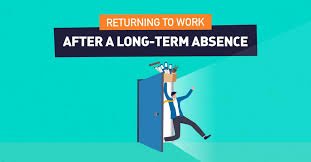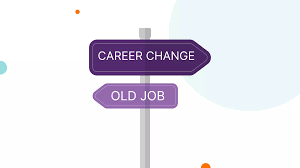
How to Answer ‘How Do You Prioritize Your Work?’ – Tips, Examples & Answers
How to Answer "How Do You Prioritize Your Work?" (With Answers)
When it comes to job interviews, one of the most frequently asked questions is, “How do you prioritize your work?” This question isn’t just a formality—it’s a test of your organizational skills, time management, and ability to handle multiple tasks efficiently. Employers want to know if you can manage your workload effectively, meet deadlines, and make smart decisions when faced with competing priorities. In this blog, we’ll explore why this question matters, how to answer it, and provide sample answers to help you stand out in your next interview.
Why Employers Ask This Question
Employers ask about prioritization for several reasons:
-
Assess Time Management Skills: Employers want to see if you can organize tasks to maximize efficiency. Being busy doesn’t always mean being productive. The ability to identify what’s important and act accordingly is key to success.
-
Understand Decision-Making Abilities: Prioritization often involves making choices under pressure. Employers want candidates who can make reasoned decisions rather than reacting haphazardly.
-
Evaluate Adaptability: Work environments are dynamic, and priorities can change quickly. How you adjust your priorities demonstrates your flexibility and problem-solving abilities.
-
Check for Strategic Thinking: Knowing how to prioritize shows that you understand the bigger picture and can align your daily tasks with organizational goals.
Steps to Answer the Question Effectively
Answering this question requires a balance of structure, clarity, and practical examples. Here’s a step-by-step guide:
1. Show Your Process
Start by explaining how you approach your work. Interviewers are more interested in your process than in a generic answer. Highlight your method of evaluating tasks based on deadlines, impact, and urgency. For example, you might say:
"I start by listing all the tasks I need to complete, then I evaluate them based on deadlines and impact. I focus on high-impact tasks that align with team or company goals first, followed by tasks that are urgent but less critical."
2. Use Real-Life Examples
Concrete examples make your answer credible. Share a situation from your previous experience where you successfully prioritized tasks. For instance:
"During my last project, I had multiple client deadlines in the same week. I created a detailed schedule, broke down each task, and communicated with my team about priorities. As a result, all deliverables were submitted on time without compromising quality."
3. Highlight Tools and Techniques
Mentioning tools or techniques you use demonstrates professionalism and preparedness. Examples include task management apps like Trello, Asana, or simple techniques like the Eisenhower Matrix (urgent vs. important tasks). For instance:
"I often use the Eisenhower Matrix to categorize my tasks and ensure I am focusing on activities that drive the most value."
4. Emphasize Flexibility
Employers appreciate candidates who can adapt. Explain that while you have a system, you can re-prioritize when needed:
"While I have a structured approach to prioritize, I remain flexible. If an urgent task comes up, I reassess my schedule and adjust accordingly, ensuring critical deadlines are met without impacting other tasks."
Sample Answers to “How Do You Prioritize Your Work?”
Here are a few sample answers tailored to different work styles:
Sample Answer 1: Structured Approach
"I prioritize my work by evaluating tasks based on urgency and impact. I start by listing all tasks and deadlines, then identify tasks that are high-impact and time-sensitive. I tackle these first while keeping track of smaller tasks that can be handled afterward. I also use tools like Trello to monitor progress and ensure nothing is overlooked."
Sample Answer 2: Team-Oriented Approach
"I prioritize my work by aligning it with team goals and project timelines. I communicate with my colleagues and managers to understand which tasks have the highest priority and impact. By collaborating with the team, I ensure that my work supports overall objectives while meeting deadlines efficiently."
Sample Answer 3: Adaptable Approach
"I usually start with a plan for the day, prioritizing tasks based on deadlines and importance. However, I remain flexible to accommodate urgent tasks or changes in project scope. For instance, in my previous role, I was able to rearrange my schedule quickly when a client requested immediate assistance, ensuring all critical tasks were completed on time."
Tips to Make Your Answer Stronger
-
Be Specific: Avoid vague statements like “I just do things as they come.” Instead, describe your strategy and provide examples.
-
Show Results: Whenever possible, mention the positive outcomes of your prioritization skills, such as meeting deadlines, improving efficiency, or reducing errors.
-
Balance Workload and Quality: Highlight that you prioritize without sacrificing quality. Employers value accuracy as much as timeliness.
-
Tailor to the Job Role: Consider the type of work you’ll be doing and frame your answer accordingly. For example, a project manager might focus on strategic prioritization, while a customer service professional may emphasize handling urgent client requests efficiently.
Common Mistakes to Avoid
-
Not Explaining Your Process: Simply saying “I get everything done” doesn’t show strategic thinking.
-
Ignoring Team Dependencies: If your work involves collaboration, make sure to mention how you coordinate with others.
-
Overcomplicating Your Answer: Keep it clear and concise. Avoid using too many technical terms or tools unless relevant to the role.
-
Failing to Mention Flexibility: Rigid answers may make you appear inflexible or unadaptable.
FAQs
1. What if I have multiple urgent tasks at the same time?
In such situations, communicate with your manager or stakeholders to clarify priorities. Use a framework like the Eisenhower Matrix to determine which tasks have the highest impact and tackle those first.
2. Should I mention specific tools I use for prioritization?
Yes. Mentioning tools like Asana, Trello, or even Google Calendar shows organization and preparedness. Just make sure the tools you reference are relevant to the job.
3. How can I demonstrate flexibility in my answer?
You can explain that while you follow a structured plan, you adjust priorities when unexpected tasks or emergencies arise. Providing an example of a situation where you successfully adapted adds credibility.
Conclusion
Answering “How do you prioritize your work?” effectively is an opportunity to showcase your organizational skills, decision-making abilities, and adaptability. By explaining your process, using real-life examples, mentioning tools, and emphasizing flexibility, you can demonstrate to the interviewer that you’re capable of managing workloads efficiently and contributing positively to the team. Remember, the key is not just to show that you can complete tasks, but that you can prioritize strategically to maximize impact.
With preparation and thoughtful answers, you can turn this common interview question into a moment to impress your potential employer and set yourself apart from other candidates.




